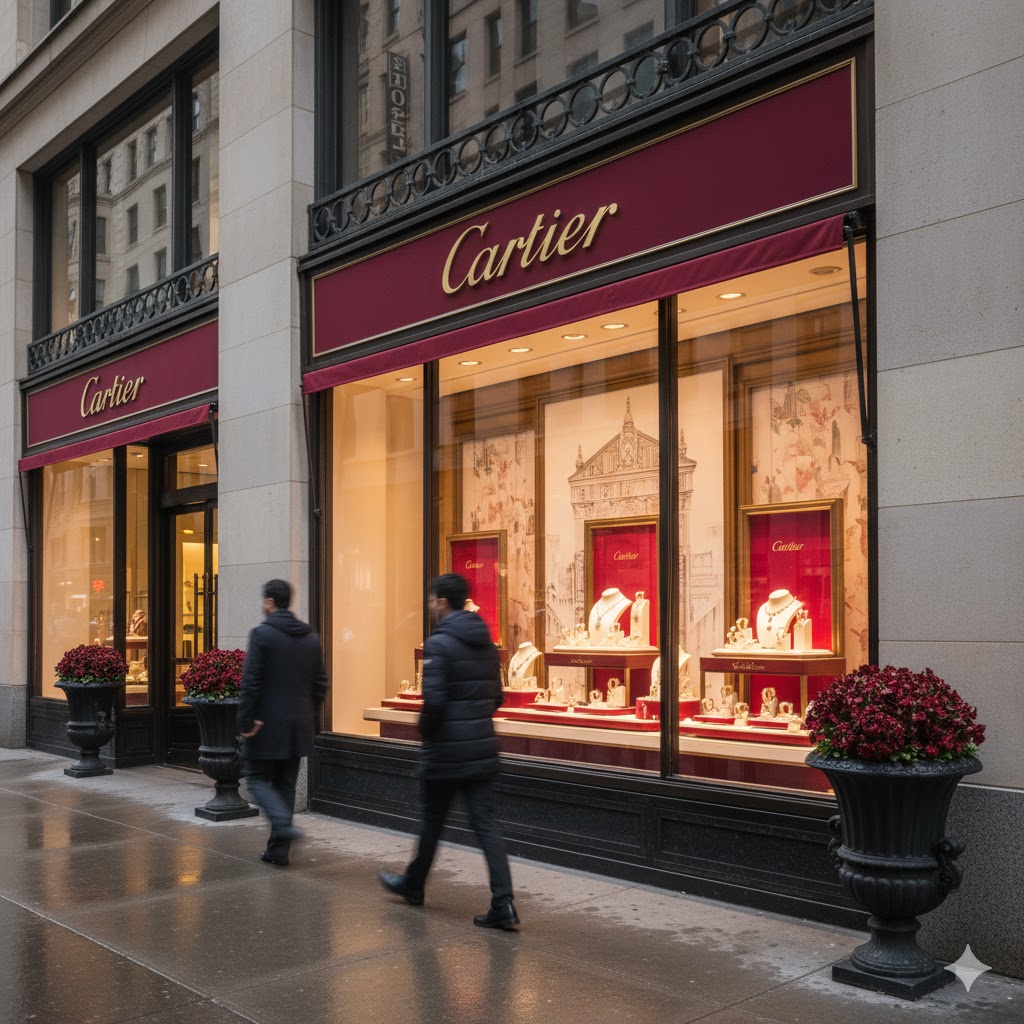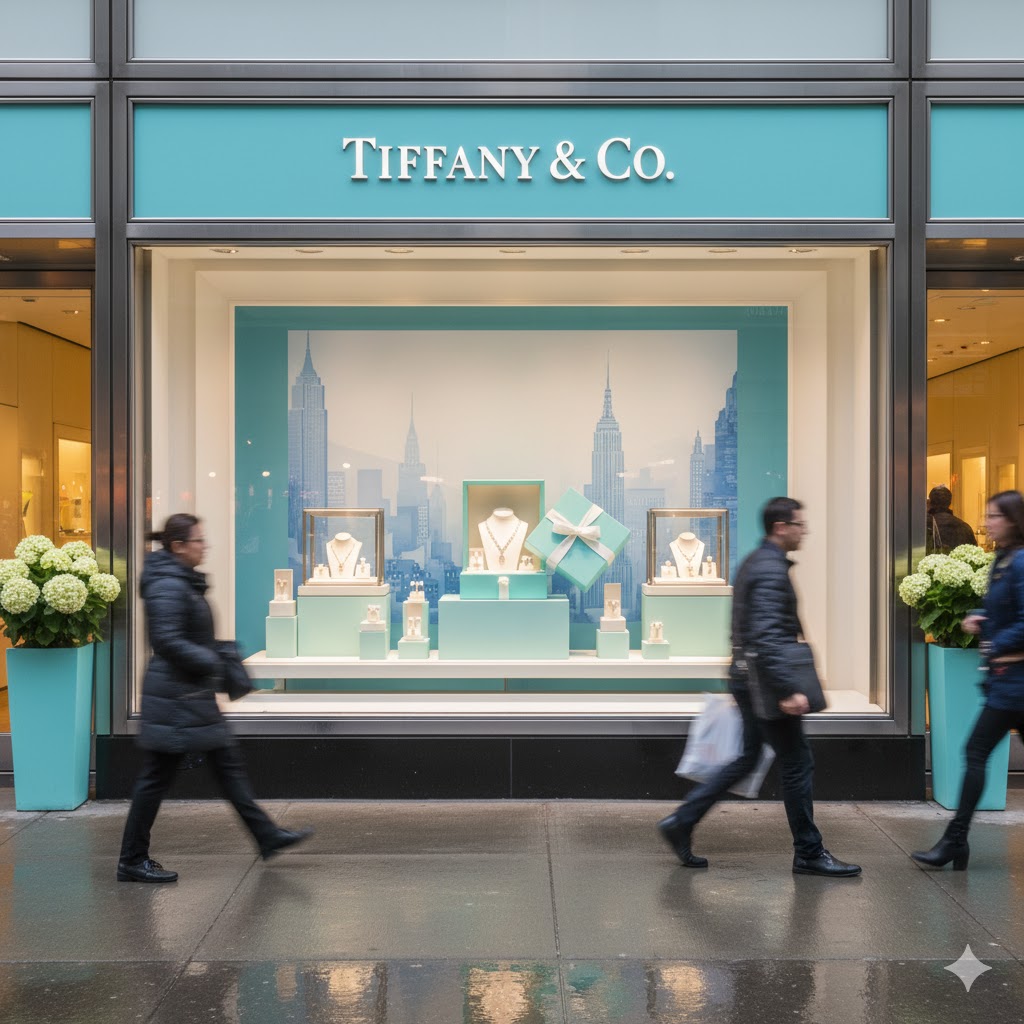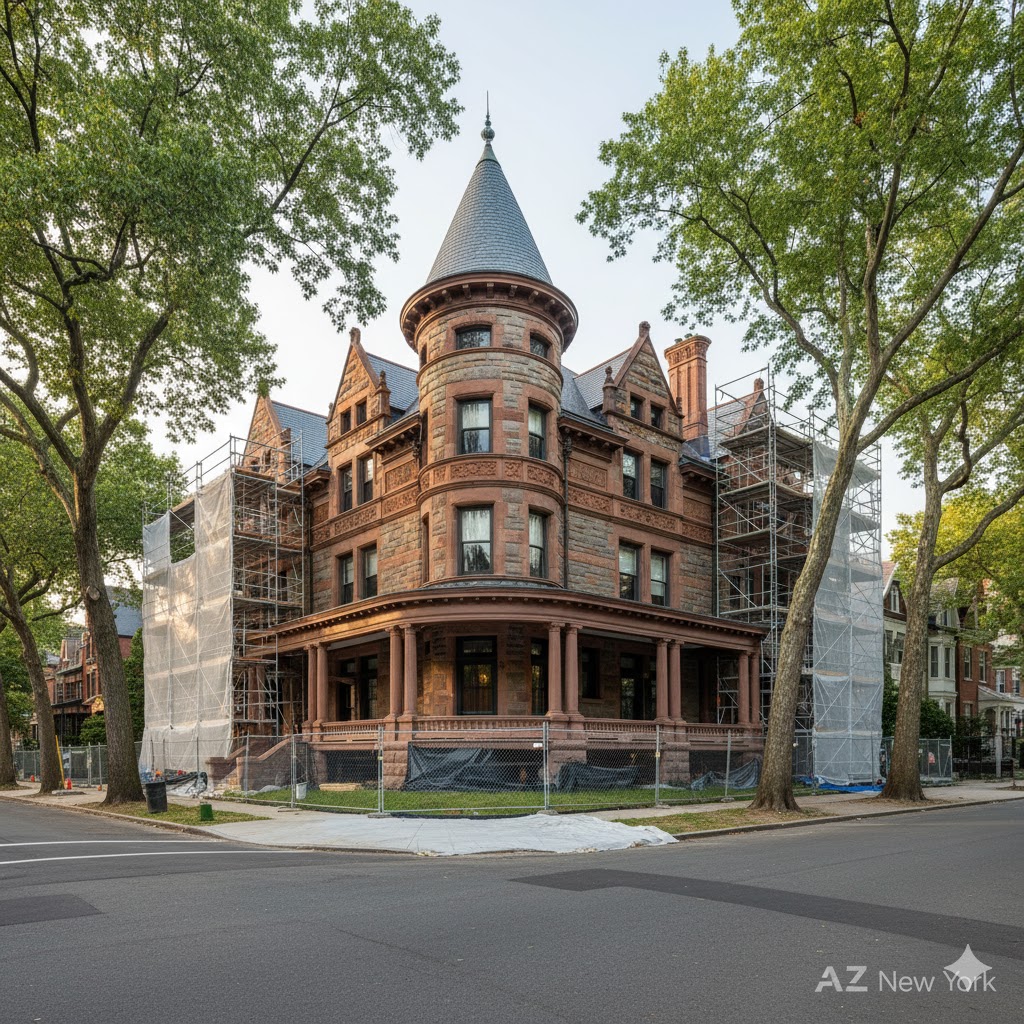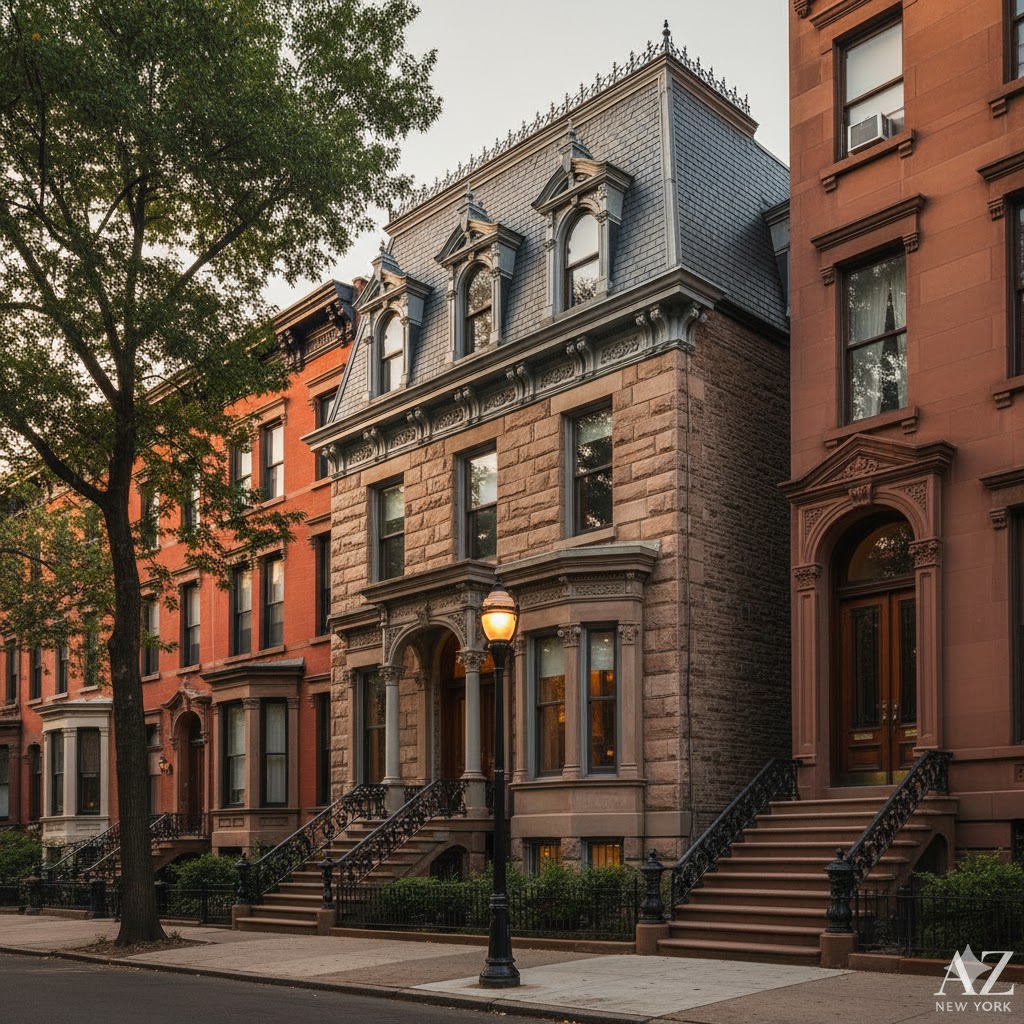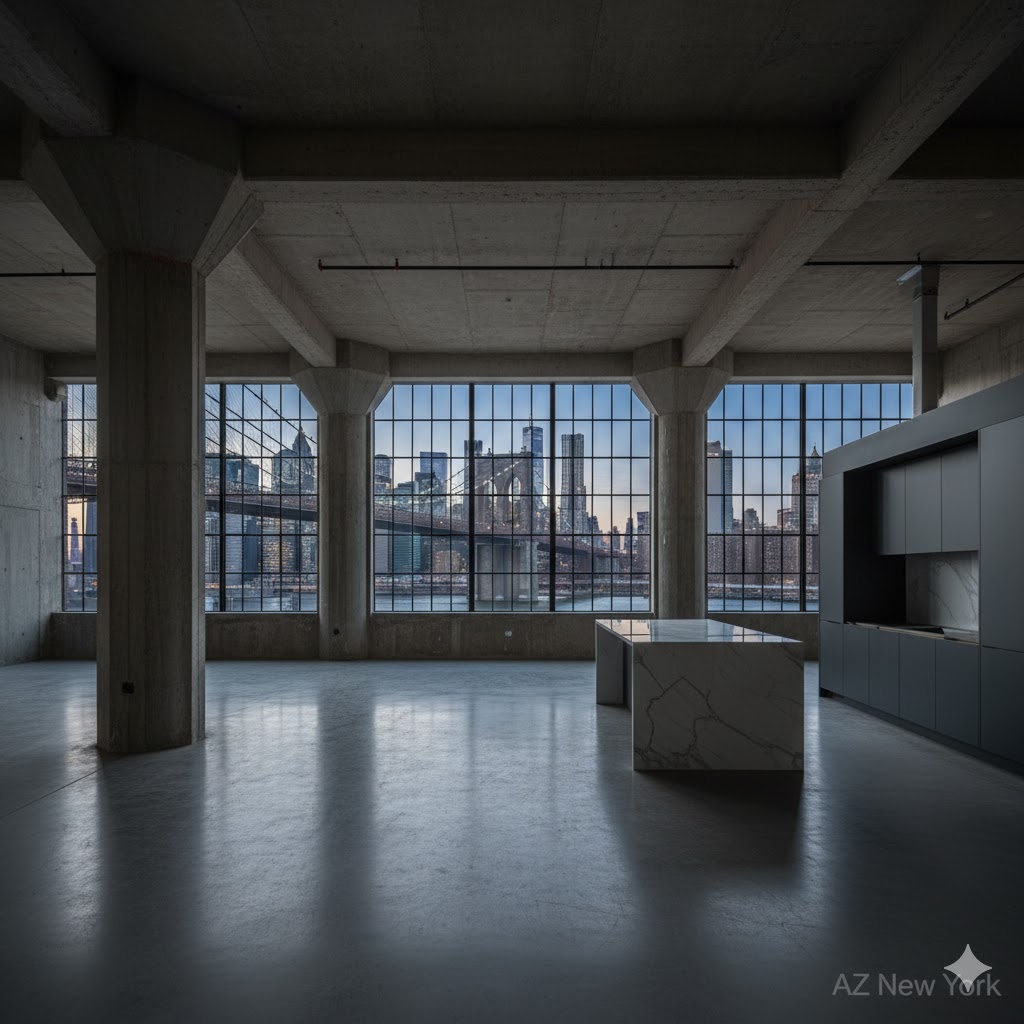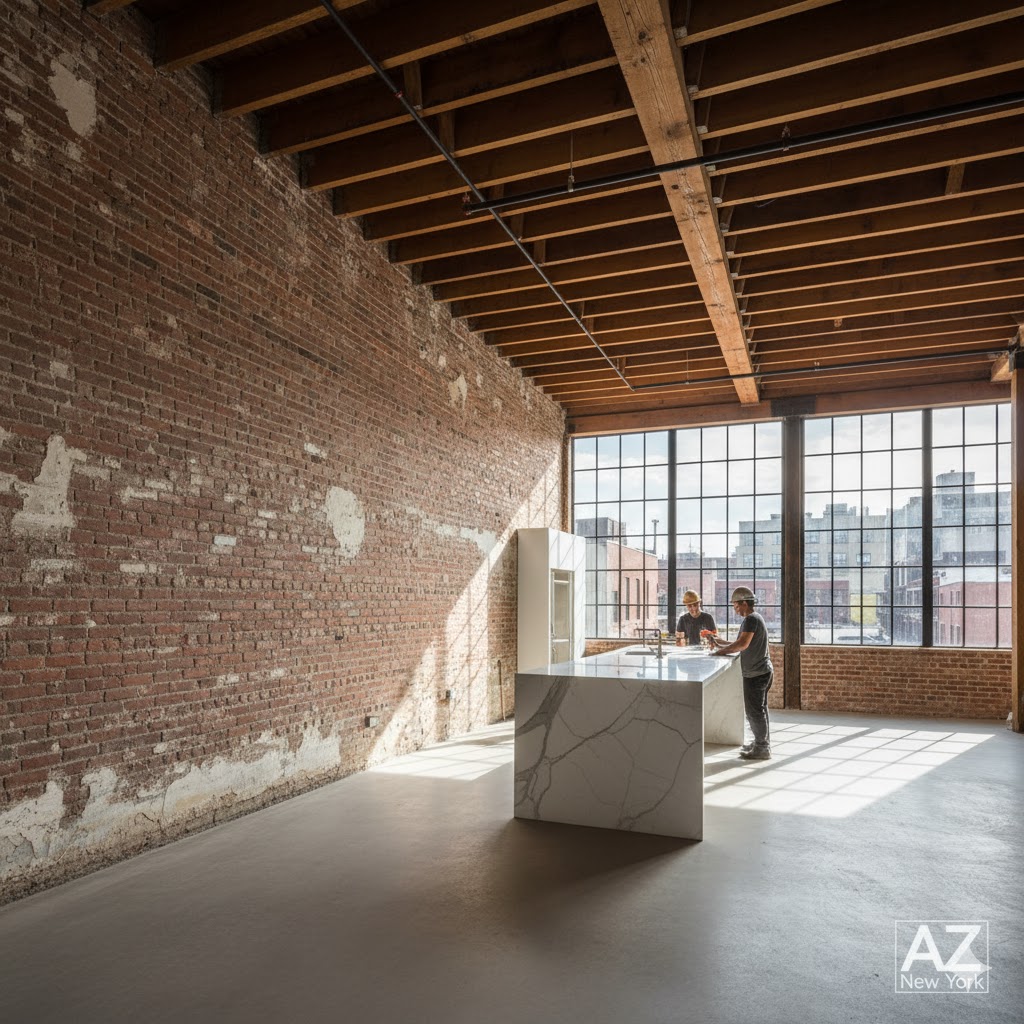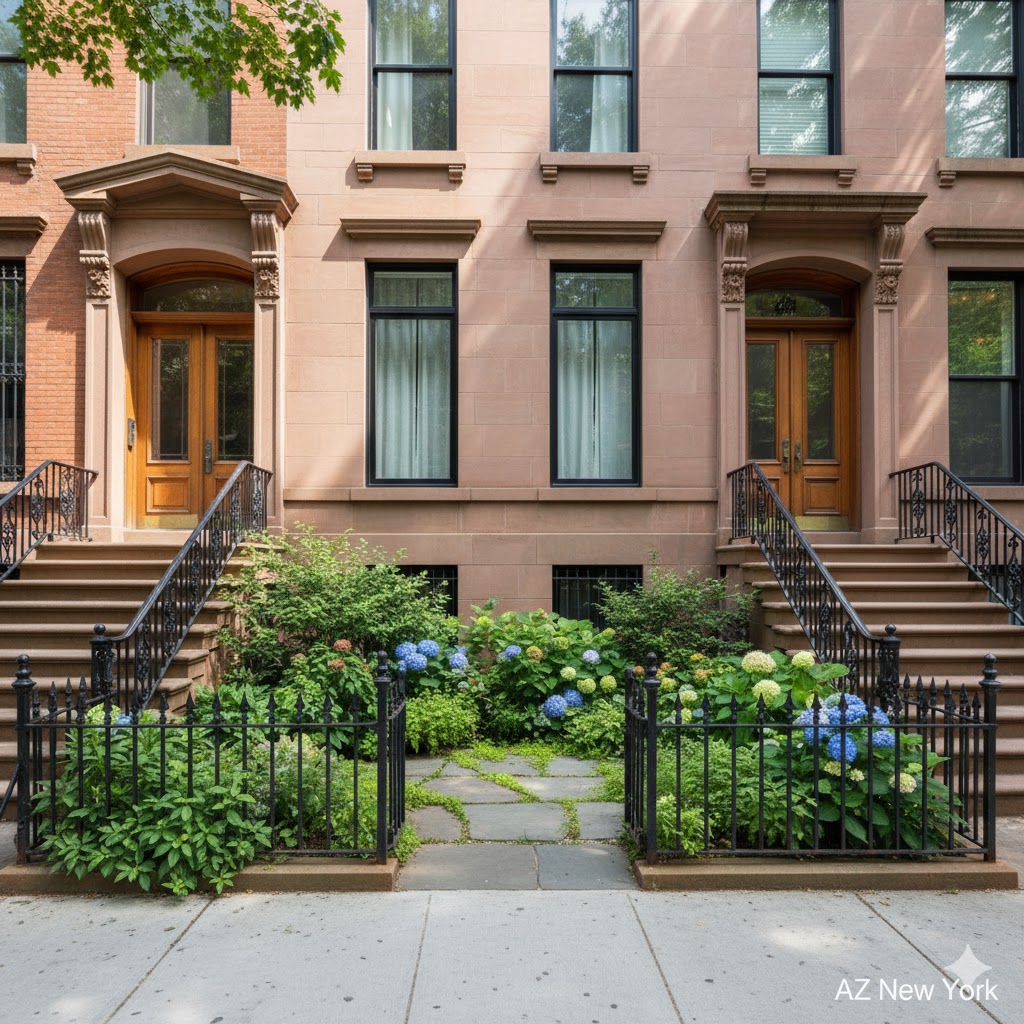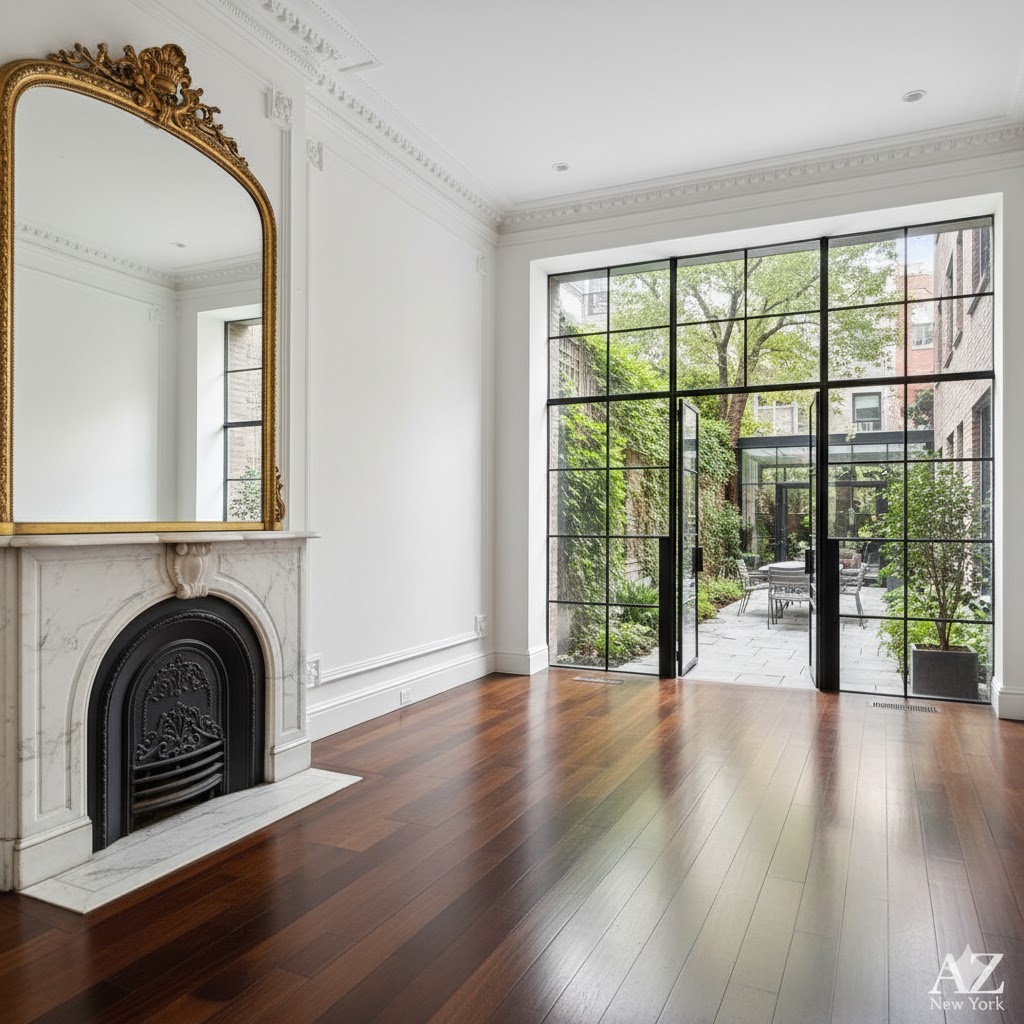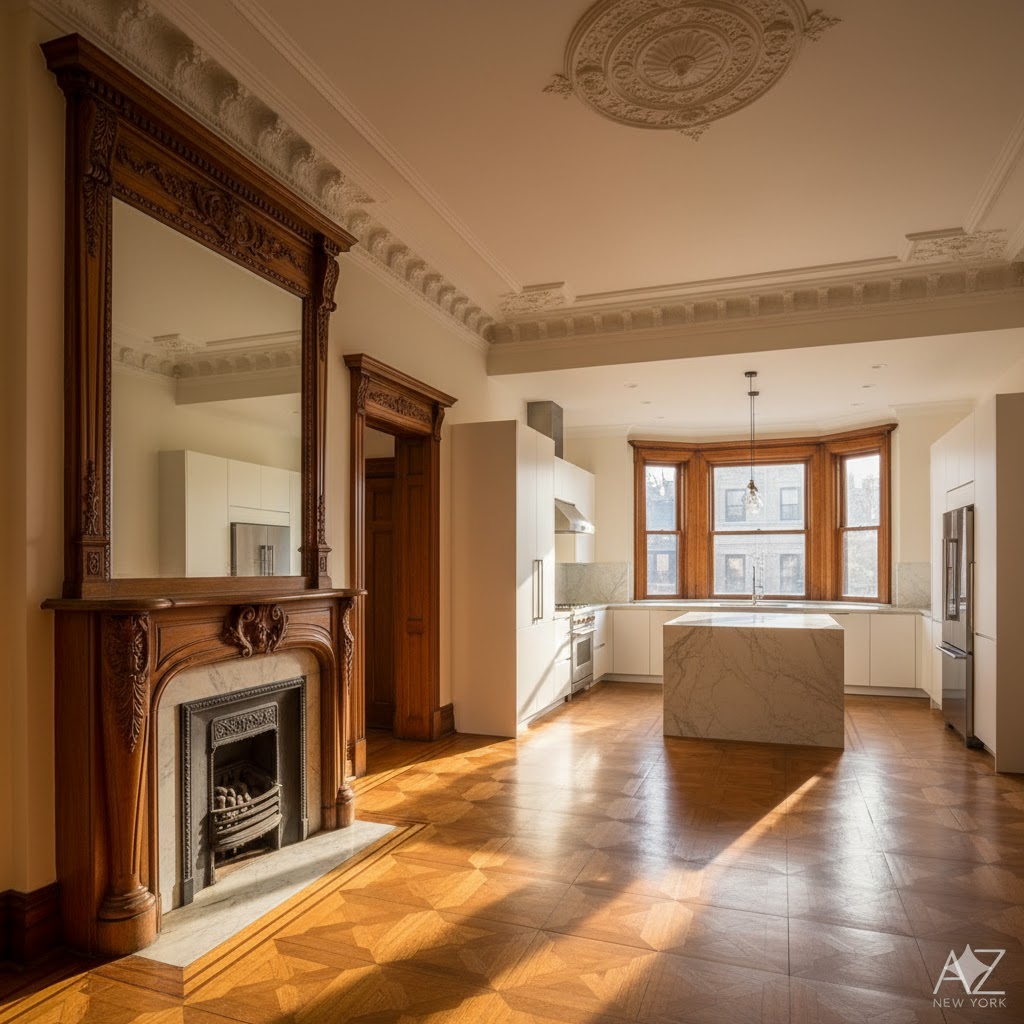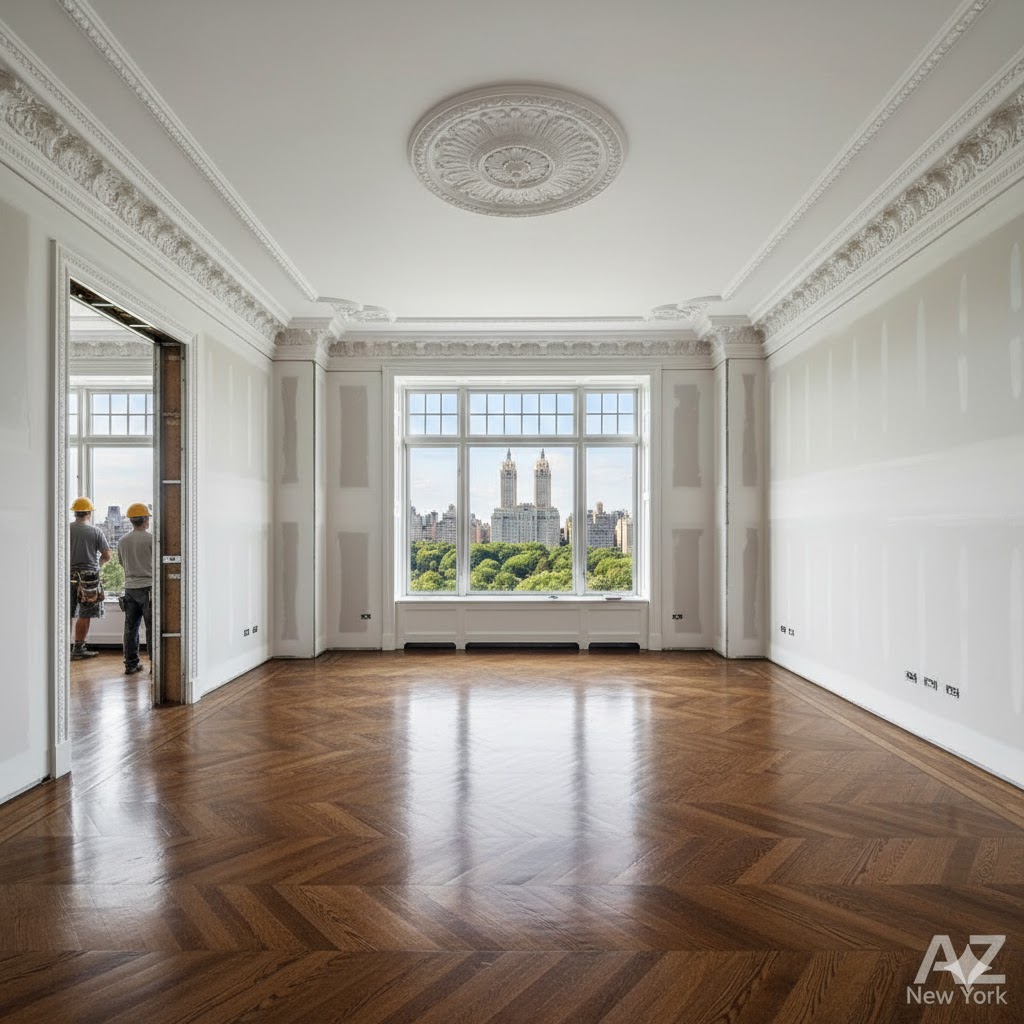What is the unwritten dress code for success in FiDi?

What is the unwritten dress code for success in FiDi?
For decades, the dress code on Wall Street was an ironclad uniform: a dark suit, a conservative tie, and polished leather shoes. It was a visual language of power.
That rigid uniform has cracked, but it has not disappeared. It has evolved into a complex, nuanced system of signals and tribes.
While a hoodie might be seen in some corners, the unwritten rules of dressing for success are more intricate than ever. Today’s code is a spectrum, from bespoke suits to “power casual,” all designed to subtly communicate status.
In this twenty-first deep dive, AZ New York deciphers the modern sartorial language of the Financial District.
The Suit: Evolution of the Uniform
The power suit is not dead, but it no longer reigns supreme. The dress code has bifurcated, reflecting the changing roles within finance.
| Attribute | The Classic Banker Uniform | The Modern FiDi Spectrum |
|---|---|---|
| The Suit | Mandatory. Conservative cut, navy or charcoal. | Required for client-facing roles (M&A), but with a slimmer, modern fit. Optional elsewhere. |
| The Mid-Layer | White or light blue dress shirt, conservative tie. | The ubiquitous “performance vest” (Patagonia, Arc’teryx), often firm-branded. |
| Footwear | Black or brown leather cap-toe Oxfords. | Expensive minimalist sneakers (Common Projects), Belgian loafers, or dress shoes. |
| “Casual Friday” | Khakis and a blue button-down shirt. | Often the daily uniform in non-client-facing roles (quant, tech). |
The Tribes of FiDi: 3 Modern Dress Codes
Today, you can often identify someone’s role and seniority by their specific “uniform.” Here are three key tribes.
Case 1: The Investment Banking Analyst/Associate
This is the modern keeper of the flame. When meeting with clients or for important internal meetings, the suit is still mandatory. It’s a uniform of trust and seriousness. The brands have been updated—think Theory or SuitSupply for juniors—but the message is the same: “I am a competent, serious professional.” The tell-tale sign of a junior banker is often the branded backpack they carry their laptop in, a practical necessity for the long hours.
Case 2: The Quant Trader / Tech Professional
This is the “finance bro” uniform often seen in popular culture. It consists of a crisp button-down shirt (often from brands like Mizzen+Main), a firm-branded fleece or vest, well-fitting trousers or dark denim, and expensive sneakers. This look signals, “My value is in my brain, not my client-facing skills.” It’s a uniform that prizes comfort and utility but still uses brand signals to denote success.
Case 3: The Managing Director / Partner (“Power Casual”)
This is the apex of the new dress code. It’s a look defined by “quiet luxury” from brands like Brunello Cucinelli and Loro Piana. Think soft, unstructured blazers, cashmere sweaters, and perfectly tailored trousers. There are no visible logos. The message is one of arrived status: “I am so successful I no longer need to wear a uniform to prove it.” This understated elegance is the ultimate power move in the modern FiDi.
Pro Tip: Invest in your shoes and your watch. These are the two items that are almost always noticed, regardless of the formality of your outfit. A great pair of shoes can elevate a simple outfit, while a classic timepiece signals attention to detail and an appreciation for quality craftsmanship.
Financial Market Curiosity: The pinstripe suit, a classic symbol of banking, has its origins in 19th-century London. According to legend, different banks would use slightly different stripe patterns and colors on their trousers to identify their employees. While this “uniform” aspect is likely embellished, the suit’s association with finance became cemented, turning it into a visual shorthand for the entire industry.
Frequently Asked Questions (FAQ)
Navigating these unwritten rules can be tricky. Here’s some clarity.
Is the ‘finance bro’ Patagonia vest a real thing?
Yes, though it’s evolved. The branded fleece or vest from a high-end outdoor company became a staple for a reason: it’s a comfortable and practical mid-layer for offices with powerful air conditioning. While the specific brand may change, the “performance vest” remains a key part of the modern finance uniform.
How does this dress code differ for women?
The principles are similar but with more variety. For client-facing roles, a tailored suit, sheath dress with a blazer, or sophisticated separates are the standard. In more casual environments, the focus is on high-quality fabrics and a polished look, whether that’s with tailored trousers, elegant blouses, or designer knitwear. The “quiet luxury” trend is equally, if not more, prevalent.
Can I get away with dressing down?
It entirely depends on your role and your firm’s specific culture. A software engineer at a hedge fund has far more latitude than an M&A analyst meeting a Fortune 500 CEO. The golden rule is to dress for your day and always be slightly more formal than you think you need to be if you’re unsure.
For more on navigating the professional world of New York, visit our Careers section.
Keywords for Your Next Internet Searches on the Subject…
Wall Street dress code, investment banking attire, finance bro uniform, power casual men, what to wear in finance, quiet luxury brands, FiDi style guide, business formal vs business casual, Brunello Cucinelli.
Tags
Dress Code, Wall Street, FiDi Style, Investment Banking, Power Casual, Quiet Luxury, Finance Bro, Corporate Culture, Menswear, Fashion, NYC Careers, SuitSupply, Brunello Cucinelli, Loro Piana, Patagonia Vest, Professional Attire, New York City
Part 1: Business, Economy, and Power (1–20)
This section explores the core of what makes the Financial District tick: the deals, the institutions, and the immense power that flows through its veins.
- What does it really mean to “work on Wall Street” today?
- How does the “investment banking” culture of FiDi shape the global economy?
- What is the true influence of the New York Stock Exchange (NYSE) on the daily lives of ordinary people?
- How deep is the connection between the political power of Washington D.C. and the decisions made on Wall Street?
- Does the “Charging Bull” still symbolize prosperity, or has it become an icon of corporate greed?
- What are the best-kept secrets of the major investment banks headquartered in FiDi?
- How is the rise of fintech and cryptocurrencies challenging the traditional financial dominance of Wall Street?
- What is the true human cost behind the multi-billion dollar profits generated in the Financial District?
- If the walls of Goldman Sachs or J.P. Morgan’s offices could talk, what would they reveal about power?
- Is Wall Street’s “work hard, play hard” culture sustainable in the long run?
- What is the role of the Federal Reserve Bank of New York in the stability (or instability) of the world economy?
- How ethical are the practices that led to the rise of so many financial empires in FiDi?
- What is the impact of artificial intelligence on the high-frequency trading that occurs on Wall Street?
- Who are the real “wolves” of Wall Street today?
- How is the gentrification of the Financial District transforming the social and economic landscape of Lower Manhattan?
- What is the next major financial crisis that could emerge from Wall Street?
- What does the concentration of so much financial power in a single area say about social inequality in the U.S.?
- How does the annual bonus culture on Wall Street affect the mindset and decisions of traders?
- What is the true story behind the fortunes built and lost on Wall Street?
- If the Financial District were a country, what would its GDP and foreign policy be?
Part 2: Lifestyle, Behavior, and Wall Street Culture (21–40)
Beyond the numbers, there’s a unique culture. This section delves into the daily lives, habits, and social dynamics of the people who power the Financial District.
- What is the unwritten dress code for success in FiDi?
- What is the daily routine of a junior analyst at an investment bank on Wall Street?
- What role do happy hours play in the networking and deal-making culture of the Financial District?
- Is life in FiDi more like the show “Billions” or the movie “The Wolf of Wall Street”?
- What are the most coveted status symbols among Wall Street professionals?
- How does the pressure to perform affect the mental health of workers in the Financial District?
- What is the “secret language” and jargon used by Wall Street insiders?
- Is there a “Wall Street dream” analogous to the “American dream”?
- How do FiDi professionals balance their personal lives with the long working hours?
- What is the role of exclusive clubs and secret societies in Wall Street’s power hierarchy?
- How has Wall Street’s culture changed since the 2008 financial crisis?
- What do “Wall Street bros” do for fun on the weekends?
- What is the soundtrack to the life of a successful trader on Wall Street?
- How important are philanthropy and donations to the public image of Wall Street billionaires?
- What are the gender dynamics like in an environment as male-dominated as Wall Street?
- What is the diet of a high-performance professional in the Financial District?
- What do Wall Street veterans teach newcomers about surviving in this competitive environment?
- What is the impact of Wall Street culture on New York City’s nightlife and relationships?
- What happens when someone on Wall Street “breaks” and loses everything?
- What cultural legacy is the current generation of Wall Street professionals leaving for the future?
Part 3: Architecture, Real Estate, and Urbanism (41–55)
The very streets and buildings of the Financial District tell a story. Here, we examine the physical environment that houses the world’s most powerful economic engine.
- How does the architecture of the Financial District’s skyscrapers reflect the power and ambition of their occupants?
- What is the story behind the names of FiDi’s streets, like Wall Street, Broad Street, and Pearl Street?
- How did One World Trade Center and the 9/11 Memorial change the landscape and spirit of the Financial District?
- What is the real cost of a luxury apartment with a view of the world’s financial heart?
- How did the geography of Lower Manhattan influence the development of the Financial District?
- What architectural secrets are hidden in the historic buildings of Wall Street?
- How does FiDi’s transportation infrastructure (subway, ferries, etc.) support the daily flow of millions of people?
- What is the future of office space in the Financial District in the era of remote work?
- How are security and surveillance integrated into the architecture and urban planning of FiDi?
- What is the historical significance of places like Trinity Church amidst the modern skyscrapers?
- How is real estate development in FiDi expanding into adjacent areas like the Seaport District?
- What is the environmental impact of concentrating so many buildings and people in such a small area?
- What do future urban planning projects reveal about the evolution of the Financial District?
- What does it feel like to walk through the narrow streets and canyons of steel and glass in FiDi?
- How is New York’s history as a commercial port still visible in the urban landscape of the Financial District?
Part 4: Gastronomy, Entertainment, and Leisure (56–70)
Where do the power players dine, drink, and unwind? This section explores the culinary and recreational landscape of the Financial District.
- Where do Wall Street bankers have lunch to close multi-million dollar deals?
- What is the most iconic bar in the Financial District for a “power happy hour”?
- How has FiDi’s dining scene evolved from simple “power lunches” to Michelin-starred restaurants?
- What role do steakhouses play in Wall Street’s business culture?
- What are the secret getaways and leisure spots for FiDi professionals to escape the pressure of work?
- How does the nightlife in the Financial District compare to other Manhattan neighborhoods, like the Meatpacking District?
- What is the most ordered drink in Wall Street bars after the market closes?
- Where do Wall Street traders celebrate a day of record profits?
- How important is coffee to the frantic routine of the Financial District?
- How are cultural and artistic events beginning to flourish in an area traditionally focused on business?
- What is the best spot in FiDi to watch the sunset over the Hudson River?
- What luxury entertainment options are available to the Wall Street elite?
- How does street food (food trucks) adapt to serve the hurried crowds of the Financial District?
- What do the restaurants and bars in FiDi reveal about the hierarchy and status of their patrons?
- What is the experience of dining in an exclusive restaurant at the top of a Financial District skyscraper?
Part 5: Luxury, Fashion, and Status (71–80)
In a world of high stakes, symbols of success matter. This section looks at the role of luxury, fashion, and status in the Financial District.
- What is the unofficial “uniform” of a successful investment banker on Wall Street?
- What are the most popular watch brands among traders in the Financial District?
- How are luxury and ostentation perceived in Wall Street culture?
- What is the dream car of a young analyst who has just received their first big bonus?
- How has fashion in FiDi evolved from the traditional suit and tie to a more “business casual” style?
- What are the favorite luxury stores and boutiques of the Wall Street elite?
- What does a bespoke suit say about someone’s position in the Wall Street hierarchy?
- How are accessories (shoes, briefcases, pens) used as symbols of power and status in FiDi?
- How important is membership in exclusive gyms and fitness clubs in the Financial District?
- How does the concept of “luxury” on Wall Street extend beyond material goods to include experiences and exclusive access?
Part 6: History, Curiosities, and Memes (81–90)
The Financial District is steeped in history and modern lore. This section uncovers fascinating stories, hidden facts, and the neighborhood’s role in internet culture.
- What is the real origin of the name “Wall Street”?
- What were the most dramatic and iconic moments in the history of the New York Stock Exchange?
- What is the story of the “Fearless Girl” statue and its relationship with the “Charging Bull”?
- What are the most famous legends and myths about the early days of Wall Street?
- How do internet memes (like the “Stonks” meme) portray and satirize the world of Wall Street?
- What were the biggest financial scandals that rocked Wall Street throughout history?
- What is the history of Federal Hall, the site where George Washington was inaugurated as the first U.S. President?
- Who are the “ghosts” of Wall Street—the companies and fortunes that vanished overnight?
- How have movies and books shaped the public’s perception of Wall Street?
- What is the most surprising curiosity about daily life in the Financial District that most people don’t know?
Part 7: Future, Innovation, and Technology (91–100)
What’s next for the Financial District? This final section looks ahead at the trends, technologies, and challenges that will define the future of Wall Street.
- How could blockchain technology and decentralized finance (DeFi) make Wall Street obsolete?
- What will be the role of humans in the financial market as artificial intelligence becomes more sophisticated?
- How is the Financial District adapting to climate change and the need for sustainability?
- What is the next major technological innovation to come out of “Silicon Alley” and impact Wall Street?
- How will remote work and the decentralization of offices affect the future of the Financial District as a center of power?
- What is Wall Street’s role in funding space exploration and other futuristic technologies?
- How is Generation Z changing the culture and priorities of the financial sector on Wall Street?
- Will the Financial District continue to be the world’s financial center in the coming decades, or will it be surpassed by other global hubs like Shanghai or Singapore?
- How are big data analytics and quantum computing transforming investment strategies on Wall Street?
- What is the most important question about the future of Wall Street that no one is asking?

